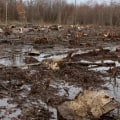People who cut down trees have several names, but the most correct name they use is Arborist. People who cut down trees are called arborists. They are also known by the name of tree surgeon or tree doctor. Arborists get qualifications to practice arboriculture in a variety of ways, and some arborists are more qualified than others.
The experience of working safely and effectively in and around trees is essential. Arborists tend to specialize in one or more disciplines of arboriculture, such as the diagnosis and treatment of pests, diseases and nutritional deficiencies in trees, climbing and pruning, protection from cables and lightning, or perhaps consulting and writing reports. All of these disciplines are related and some arborists have a lot of experience in all areas of tree work, but not all arborists have the training or experience to properly practice each discipline. In the UK, an arborist can earn qualifications up to a master's degree.
University courses include higher education qualifications such as national certificate, national diploma, while higher education courses in arboriculture include foundation, bachelor's and master's degrees. Depending on the jurisdiction, there may be a number of legal issues surrounding the practices of arborists, including boundary issues, public safety issues, heritage trees of community value; and problems of neighbors such as property, obstruction of views, impacts of roots crossing boundaries, annoying problems, quarantines for diseases or insects, and safety of nearby trees. A small tree pruner or arborist performs basic tree care, such as cutting dead branches and reducing the volume of trees. They also carry out tree checks, tree disease control and related work around road safety and tree protection. Loggers, on the other hand, cut down vast strips of trees to produce timber. Specific tasks include cutting down trees with hand-held power tools, cutting logs to required lengths, separating logs by species, operating machinery that drags logs to a landing area, and sorting logs by size and straightness.
Both occupations perform aerial platform work and use special safety harnesses to climb tall trees. Tree climbers skillfully ascend and descend a tree performing tasks designed to maintain the tree's health and appearance, such as spraying for pests or diseases or pruning branches. Alternative job titles include tree pruner, arborist and tree care foreman. Whether you're looking for a job and considering tree climbing as a career, or if you're a tree climber hoping to negotiate a better salary, you have a variety of hourly tree climber rates that may apply. They specialize in pruning, pruning and removing trees.
Landscapers care for lawns, shrubs, landscaping and light tree pruning. The two professions overlap, but they are not the same. An arborist (or tree surgeon or tree pruner and pruner, as they may sometimes be called) is a practitioner of arboriculture. These are professional professionals who can grow, manage, care for and rehabilitate trees and shrubs. There are also foresters who are professionals who specialize in managing an entire forest and may be responsible for harvesting wood, while an arborist specializes in individual trees. Tree surgeons can work side by side with arborists, but they would rarely be called that when real arborists are at work.
Trees may need to be removed for a construction project, cut down after pine beetles kill them, prune them so they don't block the sidewalk, cut them down so they don't hit power lines, move them so their roots don't break the foundation, or plant them to improve a public space. Arborists know the right climbing techniques and also where to make cuts to make branches and trees fall in the right direction. In recent years, research has shown that wound dressings such as paint tar or other coatings are unnecessary and can damage trees. Arborists are often called tree surgeons because their business looks like the way a doctor works on people. Trees in cityscape environments are often subject to disturbance whether human or natural both above and below ground. There are many respected and experienced tree surgeons but there are also many without the knowledge needed to protect and save a tree.
Trees that survive such treatment are exposed to a spectrum of detrimental effects including vigorous but weakly attached growth susceptibility to pests intrusion of pathogens and internal decay. For example an employer may offer a tree climber higher wages if they have extensive on-the-job experience or if they are an apprentice to a professional tree climber. The study cultivation and management of trees fall within a horticultural niche called arboriculture. Some professional tree services also prune shrubs and trees but often that type of work is the specialty of a gardening and gardening service.
Arborists generally focus on the health and safety of individual plants and trees rather than managing forests or harvesting timber (forestry or forestry). There can be a big difference between the techniques and practices of professional arborists and those of inadequately trained tree workers who simply prune trees. When personal safety is an issue or the tree is being removed arborists can use “spikes” (also known as “claws” or “spurs”) attached to their chainsaw boots with straps to ascend and work. An Oregon Arborist Gives a Slideshow on Tree Care and Pruning at a Garden Expo in Portland Oregon.
. .



